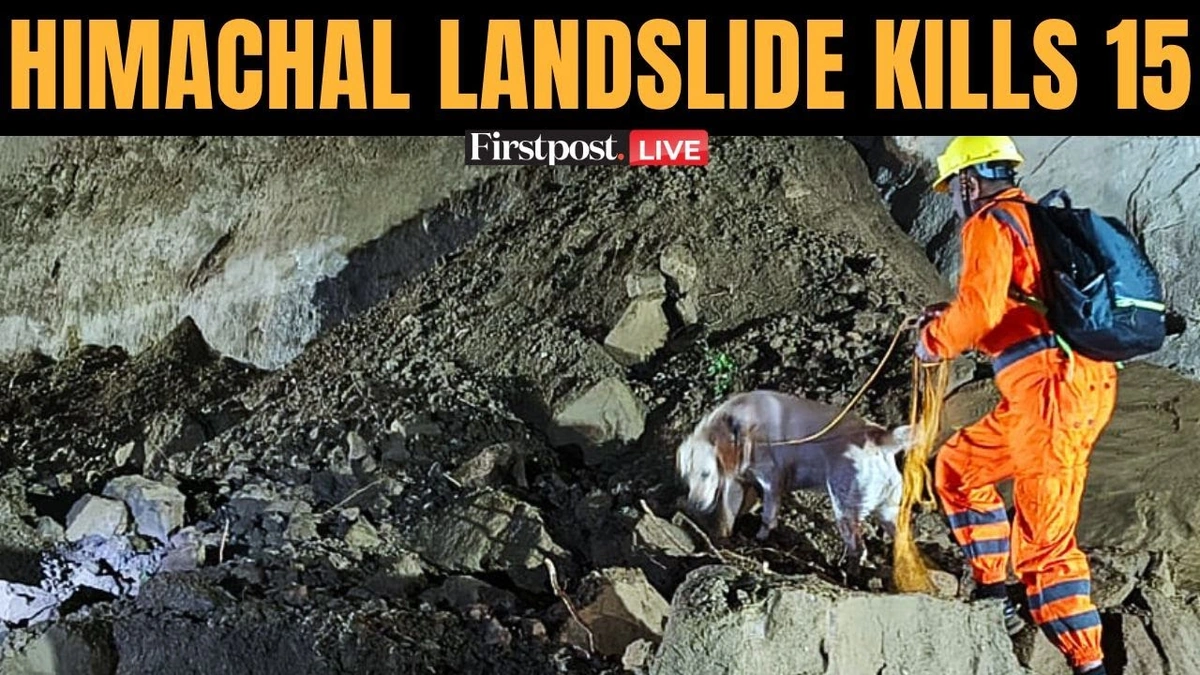The news hit like a punch to the gut, didn’t it? The Himachal landslide tragedy . Sixteen lives lost, families shattered, and the relentless downpour only making things worse. It’s easy to get caught up in the numbers, the headlines, the constant news cycle. But what about the ‘why’?
The Unfolding Disaster | Beyond the Breaking News

Let’s be honest, news reports often skim the surface. “Heavy rains caused a landslide.” Okay, but why are these landslides in Himachal Pradesh becoming so frequent and so devastating? That’s the question that keeps me up at night. I initially thought it was just a case of extreme weather, but then I dug a little deeper. And what I found was… concerning.
It’s not just about the rain, folks. It’s about a complex interplay of factors, a dangerous cocktail of environmental degradation, unchecked development, and perhaps, a touch of plain bad luck. Think about it: the Himalayas are a young, fragile mountain range. They’re still actively being formed, which means they’re inherently unstable. Add to that the increasing pressure of tourism, the construction of roads and dams, and the deforestation that weakens the soil, and you’ve got a recipe for disaster.
The Human Cost | Stories Behind the Statistics
We see the numbers – 16 dead, rescue efforts underway. But behind each number is a story, a family, a life cut short. It’s easy to become desensitized to these tragedies when they appear as just another headline. What fascinates me is the resilience of the human spirit, even in the face of such devastation. Those first responders, the villagers helping each other dig through the rubble – those are the stories that need to be amplified. They are not just battling the elements; they are facing the unimaginable loss of loved ones and neighbors. The search and rescue operations are still underway.
Environmental Factors Contributing to Himachal Landslides
Here’s the thing: climate change is not some distant threat; it’s happening right now, and it’s exacerbating the existing vulnerabilities in regions like Himachal Pradesh. The increased frequency and intensity of rainfall, the melting glaciers that destabilize slopes – these are all direct consequences of a changing climate. And let’s not forget the role of deforestation. Trees act as natural anchors, their roots holding the soil together. When forests are cleared for development or agriculture, the land becomes far more susceptible to landslides. The relationship between the fragile Himalayan ecosystem and the rampant development is now a serious concern.
What Can Be Done? Mitigation and Prevention Strategies
Okay, so we know the ‘why.’ Now, what about the ‘how’? How can we prevent future tragedies like the Himachal landslide ? It’s a multifaceted problem that requires a multifaceted solution. First and foremost, we need stricter regulations on construction and development in ecologically sensitive areas. We need to prioritize sustainable tourism practices that minimize the impact on the environment. And we need to invest in early warning systems and disaster preparedness programs to help communities respond more effectively to emergencies.
A common mistake I see is that people think of environmental protection as something separate from economic development. But the truth is, they’re inextricably linked. You can’t have sustainable economic growth without a healthy environment. The construction projects along the riverbeds cause more damage than good. It’s crucial to integrate environmental considerations into every aspect of planning and policymaking. The government’s role in disaster management in hilly areas is crucial for the overall safety.
Rebuilding and Recovery | A Long Road Ahead
The immediate aftermath of the landslide is just the beginning. The long road to recovery will require sustained effort and support from both the government and the community. People have lost their homes, their livelihoods, and their loved ones. Providing them with adequate compensation, rehabilitation, and psychological support is essential. It’s also an opportunity to rebuild in a more sustainable and resilient way, incorporating disaster-resistant construction techniques and promoting environmental conservation.
Let me rephrase that for clarity: It’s not just about rebuilding what was lost, but about building something better, something stronger, something that can withstand the challenges of a changing climate. The affected families need long-term support.
What fascinates me is that the situation is not entirely bleak, the recovery process will take time. We need to learn from these tragedies and work towards a future where development and environment can coexist in harmony. The government initiatives and community participationare crucial for the recovery process.
FAQ About Himachal Landslides
What are the main causes of landslides in Himachal Pradesh?
A combination of heavy rainfall, deforestation, unstable terrain, and construction activities.
How can I help the victims of the Himachal landslide?
Donate to reputable charities and relief organizations working on the ground.
What precautions can I take when traveling to landslide-prone areas?
Stay informed about weather conditions, avoid traveling during heavy rainfall, and follow local authorities’ instructions. Check weather updates from the India Meteorological Department (IMD) .
What are the long-term solutions to prevent landslides in the Himalayas?
Sustainable development practices, reforestation, stricter construction regulations, and climate change mitigation. A collective effort is needed to bring a change.
What kind of government assistance is available for landslide victims?
Financial compensation, rehabilitation programs, and housing assistance. Check with the local government for detailed schemes. It is important to keep track of government relief measures .
What role does climate change play in increasing landslides?
Increased rainfall intensity and melting glaciers destabilize slopes and trigger landslides.
The Himachal landslide tragedy is a wake-up call. It’s a reminder that we cannot continue to exploit the environment without consequences. The price of unchecked development is human lives. It is high time to prioritize sustainability, protect our fragile ecosystems, and build a more resilient future for all.




